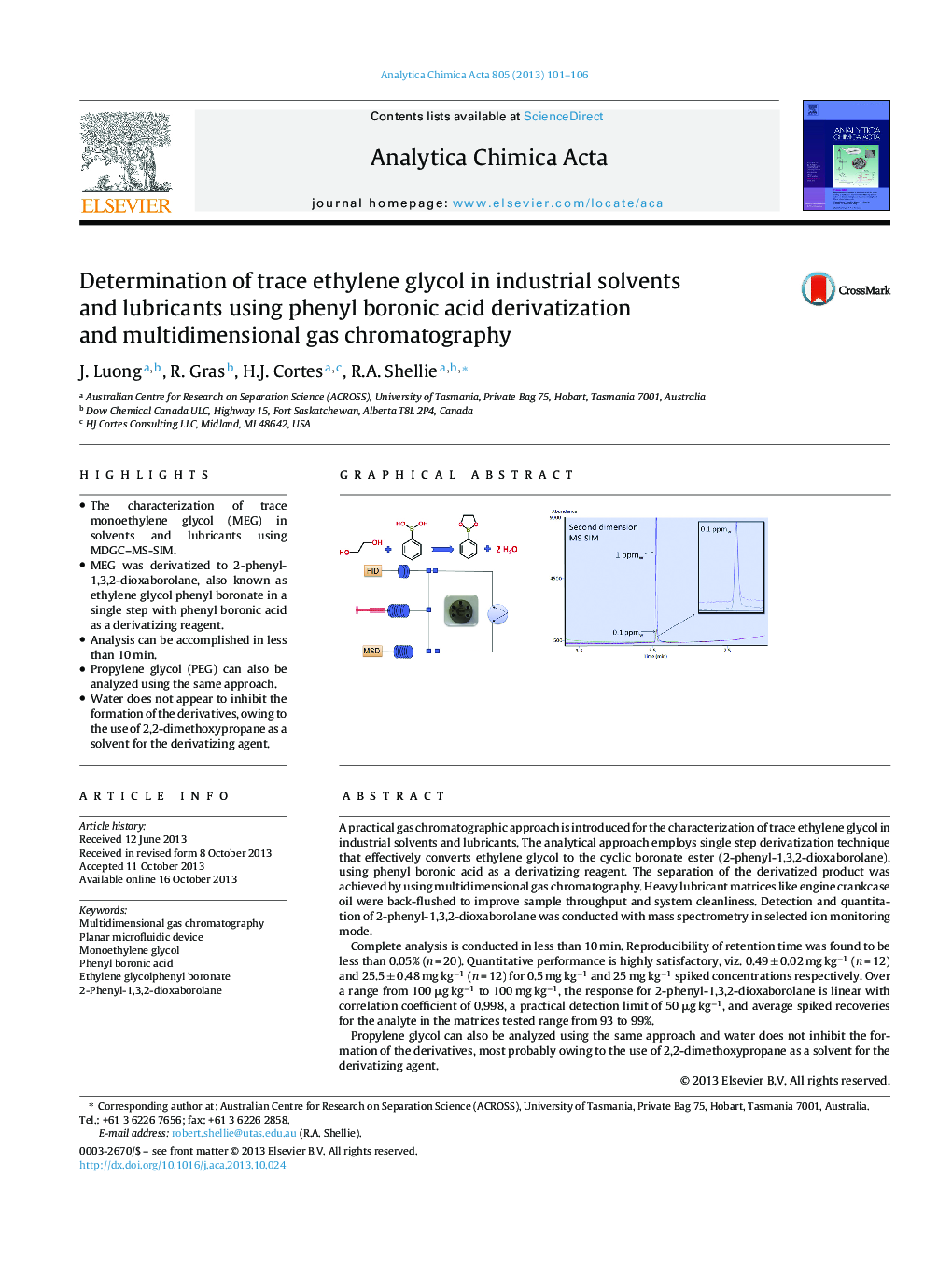| کد مقاله | کد نشریه | سال انتشار | مقاله انگلیسی | نسخه تمام متن |
|---|---|---|---|---|
| 1165068 | 1491027 | 2013 | 6 صفحه PDF | دانلود رایگان |

• The characterization of trace monoethylene glycol (MEG) in solvents and lubricants using MDGC–MS-SIM.
• MEG was derivatized to 2-phenyl-1,3,2-dioxaborolane, also known as ethylene glycol phenyl boronate in a single step with phenyl boronic acid as a derivatizing reagent.
• Analysis can be accomplished in less than 10 min.
• Propylene glycol (PEG) can also be analyzed using the same approach.
• Water does not appear to inhibit the formation of the derivatives, owing to the use of 2,2-dimethoxypropane as a solvent for the derivatizing agent.
A practical gas chromatographic approach is introduced for the characterization of trace ethylene glycol in industrial solvents and lubricants. The analytical approach employs single step derivatization technique that effectively converts ethylene glycol to the cyclic boronate ester (2-phenyl-1,3,2-dioxaborolane), using phenyl boronic acid as a derivatizing reagent. The separation of the derivatized product was achieved by using multidimensional gas chromatography. Heavy lubricant matrices like engine crankcase oil were back-flushed to improve sample throughput and system cleanliness. Detection and quantitation of 2-phenyl-1,3,2-dioxaborolane was conducted with mass spectrometry in selected ion monitoring mode.Complete analysis is conducted in less than 10 min. Reproducibility of retention time was found to be less than 0.05% (n = 20). Quantitative performance is highly satisfactory, viz. 0.49 ± 0.02 mg kg−1 (n = 12) and 25.5 ± 0.48 mg kg−1 (n = 12) for 0.5 mg kg−1 and 25 mg kg−1 spiked concentrations respectively. Over a range from 100 μg kg−1 to 100 mg kg−1, the response for 2-phenyl-1,3,2-dioxaborolane is linear with correlation coefficient of 0.998, a practical detection limit of 50 μg kg−1, and average spiked recoveries for the analyte in the matrices tested range from 93 to 99%.Propylene glycol can also be analyzed using the same approach and water does not inhibit the formation of the derivatives, most probably owing to the use of 2,2-dimethoxypropane as a solvent for the derivatizing agent.
Figure optionsDownload as PowerPoint slide
Journal: Analytica Chimica Acta - Volume 805, 17 December 2013, Pages 101–106